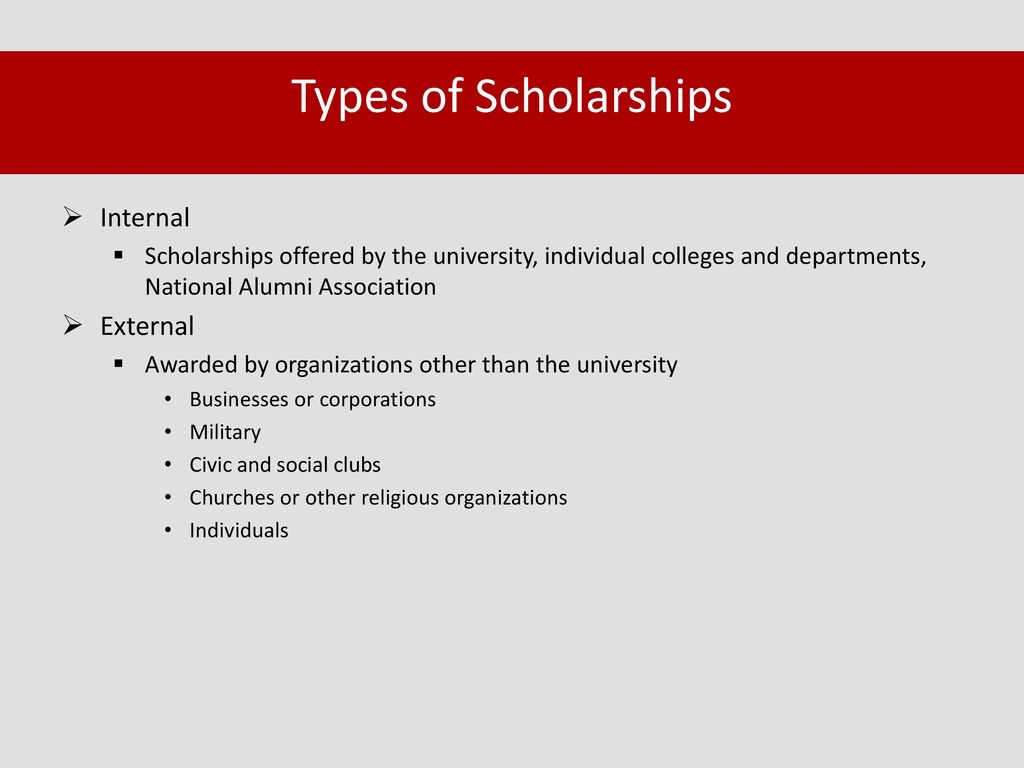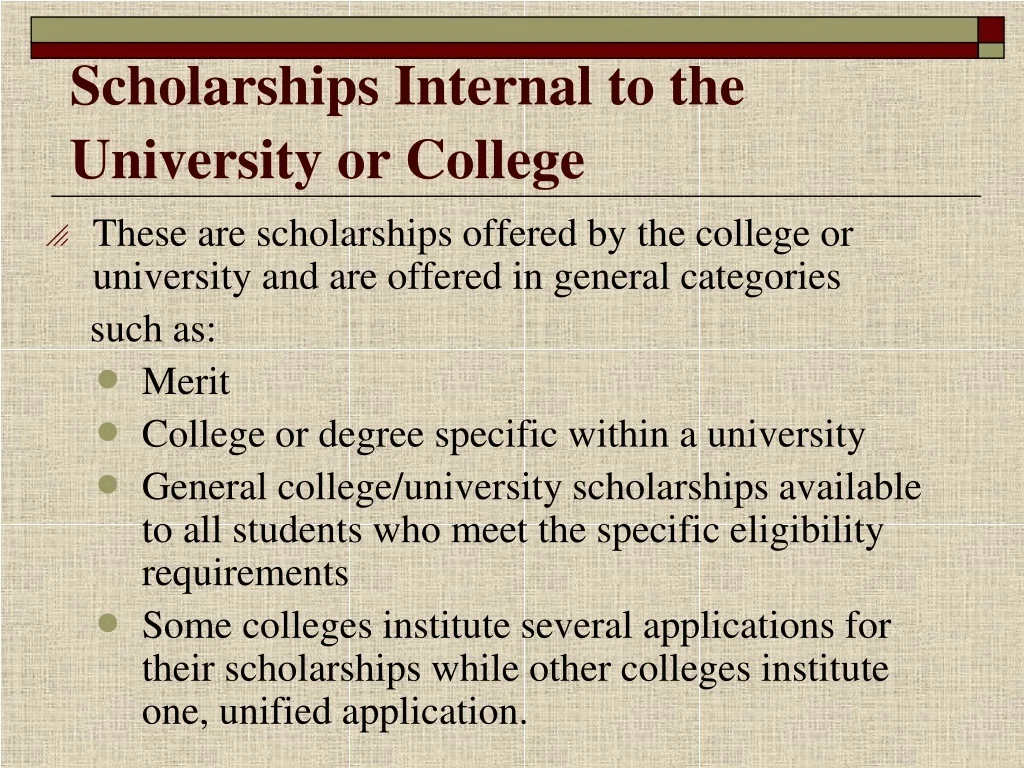Unlocking Your University’s Best-Kept Secret: My Journey with Internal Scholarships
Hey there! If you’re anything like I was a few years ago, you’re probably dreaming big about college or university, but also feeling a knot in your stomach every time you look at tuition fees. I get it. The cost of education can feel overwhelming, like a massive mountain you have to climb before you even start learning. I remember those nights, staring at my laptop screen, searching for scholarships, only to feel more lost and discouraged by the sheer number of applicants for every external fund out there. It felt like trying to find a needle in a haystack, and honestly, I was almost ready to give up on my dream school.
But then, something shifted. I stumbled upon a "secret weapon" that completely changed my academic journey and, dare I say, my life. And that secret weapon? Internal scholarships.
Let me tell you a story about how I discovered these hidden gems and why you absolutely, positively should be looking into them too.
The Moment I Realized I Was Looking in the Wrong Place
My scholarship hunt started like most people’s: scouring big national databases, applying to scholarships based on obscure essay prompts, and competing with thousands of students from across the country. It was exhausting, and the rejection letters (or, more often, just silence) were demoralizing. I felt like a small fish in a huge ocean, constantly battling for scraps.
One afternoon, completely dejected, I was talking to a senior student, Sarah, who seemed to glide through her studies without the constant financial stress I felt. I hesitantly asked her how she managed it. She just smiled and said, "Have you checked out the university’s own scholarship portal? Not the big external ones, but the ones your school offers directly?"
My mind was blown. It sounds so simple now, right? But in my frantic search for external funding, I had completely overlooked the most obvious source: my own institution. It was like I was looking for water in the desert while standing next to a well.
So, What Exactly Are Internal Scholarships?
Let’s break it down in simple terms. Internal scholarships are financial aid opportunities that are funded and administered directly by your university, college, or even specific departments within your school. Unlike external scholarships, which come from outside organizations (like a national charity, a big corporation, or a specific foundation), internal scholarships are from your school, for its students.
Think of them as your university’s way of investing in its own community. They want to attract bright minds, support current students, and help ensure everyone has a fair shot at success, regardless of their financial background. They’re often funded by alumni donations, university endowments, or departmental budgets.
Why Are They So Often Overlooked (and Why That’s Great for You!)
This is the really interesting part. Most students, like the "old me," tend to focus on the big, flashy external scholarships because those are the ones that get all the media attention. Everyone knows about the Coca-Cola Scholars or the Gates Millennium Scholars. But very few people actively dig deep into their university’s specific offerings.
And guess what? That means less competition for you!
Imagine applying for a scholarship alongside 500 other students from across the globe versus applying for one alongside 50 students who are already enrolled or accepted into your specific program. The odds are immediately, significantly better. This was a game-changer for me.
The "Secret Sauce" of Internal Scholarships: Why They’re a Game-Changer
Beyond the reduced competition, here’s why internal scholarships are often a smarter bet:
- Tailored Criteria: These scholarships are often designed with specific students in mind. They might be for students in a particular major (like engineering, humanities, or nursing), from a certain region, with a specific GPA, demonstrating leadership in a campus club, or even for students facing unique personal circumstances. This means you can find scholarships that truly match your profile, not just a generic "all students" category.
- Simpler Application Processes: While external scholarships often demand lengthy essays, multiple recommendation letters from external sources, and complex financial disclosures, many internal scholarships have more streamlined applications. Sometimes, it’s just a short essay, your transcript, and maybe a letter from a professor you already know.
- Stronger Institutional Support: Your university wants you to succeed. When you apply for an internal scholarship, you’re not just a number; you’re a potential asset to their student body. The financial aid office or the department offering the scholarship might even be able to offer guidance or feedback on your application.
- Renewable Options: Many internal scholarships are renewable, meaning if you maintain certain academic standards, you can receive the funding year after year. This provides incredible financial stability throughout your degree.
- Less Stress, More Focus: Knowing you have financial support directly from your school allows you to breathe easier, focus on your studies, and engage more fully in campus life without the constant worry of how you’ll pay next semester’s tuition.
My Personal Breakthrough: Finding the Right Fit
After my chat with Sarah, I dove headfirst into my university’s website. I didn’t just look at the main financial aid page; I explored individual department websites, student life pages, and even specific research centers. It took some digging, but what I found was incredible.
I discovered a scholarship specifically for students in my major (English Literature) who demonstrated both academic merit and a commitment to community service. It wasn’t a huge national award, but it was enough to cover a significant chunk of my tuition for a year. And the best part? Only about 30 students in my department were eligible, and even fewer actually applied!
The application process was straightforward: a personal statement about my passion for literature and my volunteer work, my academic transcript, and one letter of recommendation from a professor. Because I already knew my professors, getting that letter was much easier than trying to get one from someone outside the university who barely knew me.
When I received the email saying I had been awarded the scholarship, a massive weight lifted off my shoulders. It wasn’t just the money; it was the validation that my university believed in me and wanted to invest in my future. That feeling was priceless.
How YOU Can Find Your University’s Internal Scholarships
Ready to start your own search? Here’s a step-by-step guide based on my experience:
- Start with Your University’s Official Website: This is your primary resource. Look for sections like "Financial Aid," "Scholarships," "Admissions," or "Student Services." Don’t just skim; read carefully!
- Check Departmental Websites: If you know your major, go directly to that department’s website. Many departments offer scholarships exclusively for their students. For example, the "History Department Scholarship" or the "School of Business Dean’s Award."
- Visit the Financial Aid Office (In Person or Virtually): These folks are the experts! Schedule an appointment or send an email. Ask them directly about internal scholarships you might be eligible for. They often have a comprehensive list that isn’t always fully publicized online.
- Talk to Your Professors and Academic Advisors: They are usually aware of departmental or faculty-specific funding opportunities. A casual chat during office hours could uncover a scholarship you never knew existed.
- Explore Student Portals and Intranet: Many universities have a student portal where they post announcements, events, and yes, sometimes scholarship opportunities that are only visible to current students.
- Look for Specific Criteria: Don’t limit yourself to "merit-based" or "need-based." Look for scholarships based on:
- Major/Minor: As I did!
- Leadership/Extracurriculars: For student leaders, club members, or athletes.
- Community Service: For those who give back.
- Specific Demographics: Sometimes for first-generation students, students from certain backgrounds, or specific regions.
- Research Interests: Especially for graduate students or undergraduates involved in research.
Crafting a Winning Application: My Best Tips
Once you find a scholarship, applying smartly is key. Here’s what I learned:
- Read the Instructions Meticulously: This sounds obvious, but so many people miss crucial details. Know exactly what’s required and when it’s due.
- Tailor Your Application: Don’t use a generic essay. For each scholarship, make sure your essay and supporting documents directly address the criteria and values of that specific award. Show them why you are the perfect fit.
- Tell Your Story: Don’t just list your achievements. Weave them into a narrative. Explain why you’re passionate about your field, how your experiences have shaped you, and what this scholarship would mean for your future. Make it personal and authentic.
- Highlight Your Connection to the University: Since it’s an internal scholarship, emphasize your involvement in campus life, your commitment to your studies at this specific institution, and how you contribute to the university community.
- Proofread, Proofread, Proofread: A sloppy application can instantly diminish your chances. Get a friend, family member, or even a writing center tutor to review your materials for grammar, spelling, and clarity.
- Request Recommendation Letters Early: Give your professors plenty of time to write a thoughtful letter. Choose professors who know you well and can speak positively about your academic abilities and character.
Beyond the Money: The Deeper Impact
Receiving an internal scholarship wasn’t just about financial relief for me. It also fostered a deeper connection with my university. I felt more integrated into the academic community, more supported, and more motivated to excel. It allowed me to focus on my studies, participate in extracurriculars I loved, and even explore research opportunities without the constant shadow of student debt looming over me.
That feeling of being recognized and invested in by my own institution was incredibly empowering. It transformed my college experience from a financial burden into an exciting journey of growth and discovery.
Don’t Let Your University’s Best-Kept Secret Stay a Secret!
So, if you’re out there, feeling the pinch, or just looking for smart ways to fund your education, please, take it from me: start looking inwards. Your university is often your best advocate and has resources specifically set aside to help students like you.
Don’t be afraid to ask questions, to dig a little deeper, and to put yourself out there. You might just find that your biggest financial breakthrough is waiting for you, right within the walls of your own campus. Good luck – I’m rooting for you!
Frequently Asked Questions (FAQs) About Internal Scholarships
Q1: Are internal scholarships only for students with high grades?
A: Not at all! While many internal scholarships are merit-based (for good grades), many others focus on financial need, specific majors, leadership qualities, community service, unique talents (like music or sports), or even overcoming personal challenges. Always check the criteria for each scholarship.
Q2: Can international students apply for internal scholarships?
A: Often, yes! Many universities offer internal scholarships specifically for international students, or their general internal scholarships are open to all enrolled students regardless of citizenship. However, it’s crucial to check the eligibility requirements for each specific scholarship.
Q3: How many internal scholarships can I apply for?
A: Generally, there’s no limit to how many internal scholarships you can apply for, as long as you meet the eligibility criteria for each. However, some universities might have policies on how many scholarships a student can receive in a given period, or a "stacking" policy where total aid cannot exceed the cost of attendance. Always clarify with your financial aid office.
Q4: When is the best time to apply for internal scholarships?
A: Application deadlines vary widely. Some might be in the fall for the following academic year, others in the spring. It’s best to start looking as early as possible – ideally, even before you’re fully accepted, and definitely as soon as you’re enrolled. Keep an eye on your university’s financial aid calendar.
Q5: Do I need to reapply for internal scholarships every year?
A: It depends on the scholarship. Some internal scholarships are renewable, meaning if you meet certain conditions (like maintaining a specific GPA), they will automatically renew. Others require you to reapply each year. The scholarship terms will specify this information.
Q6: What if I don’t see many internal scholarships listed on my university’s website?
A: Don’t give up! Sometimes, the public-facing website only lists the most prominent ones. This is where visiting or contacting the financial aid office, individual departmental offices, and talking to professors becomes crucial. They often have knowledge of smaller, less publicized funds.



